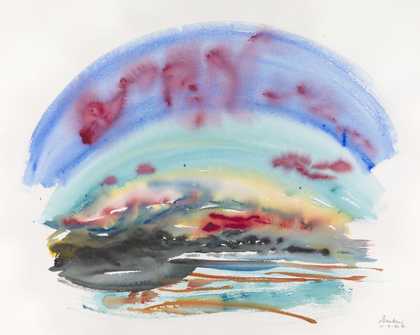
Maggi Hambling, Sunrise 11.7.90 1990. Tate. ôˋ Maggi Hambling. All Rights Reserved 2020 / Bridgeman Images.
John Constable: Landscape and Legacy
8 rooms in JMW Turner
ãPainting is but another word for feeling.ã ã John Constable, 1821
Today, John Constable is recognised alongside JMW Turner as one of the great nineteenth-century British landscape painters. While his expressive style is just as radical as Turnerãs, it took him much longer to find fame. This display brings Constableãs work into dialogue with contemporary artists from ¯íý¿°ìÝÞãs collection, who similarly look to the British countryside for inspiration.
In 1823 Constable remarked, ãI was born to paint a happier land, my own dear Englandã. He loved his native Stour Valley, which lies between the counties of Suffolk and Essex in south-east England, and his landscapes have become synonymous with an idyllic and romanticised depiction of the countryside. Constable painted the environments that held special significance to him ã Hampstead, Salisbury, and Brighton. Even at the time, his work was powerfully nostalgic. Britain was changing ã cities were growing and industry was booming. Rural life was changing too. Bad harvests and falling wages created challenges not evident in the pictures you see here.
Constableãs work in painting, drawing, watercolour and printmaking have proven particularly influential for artists who look to landscapes for inspiration. All of the contemporary artists featured in this display have cited his work as an influence on their art. Together, these artworks speak to themes which have endured for centuries: our relationship with place, environment and memory.
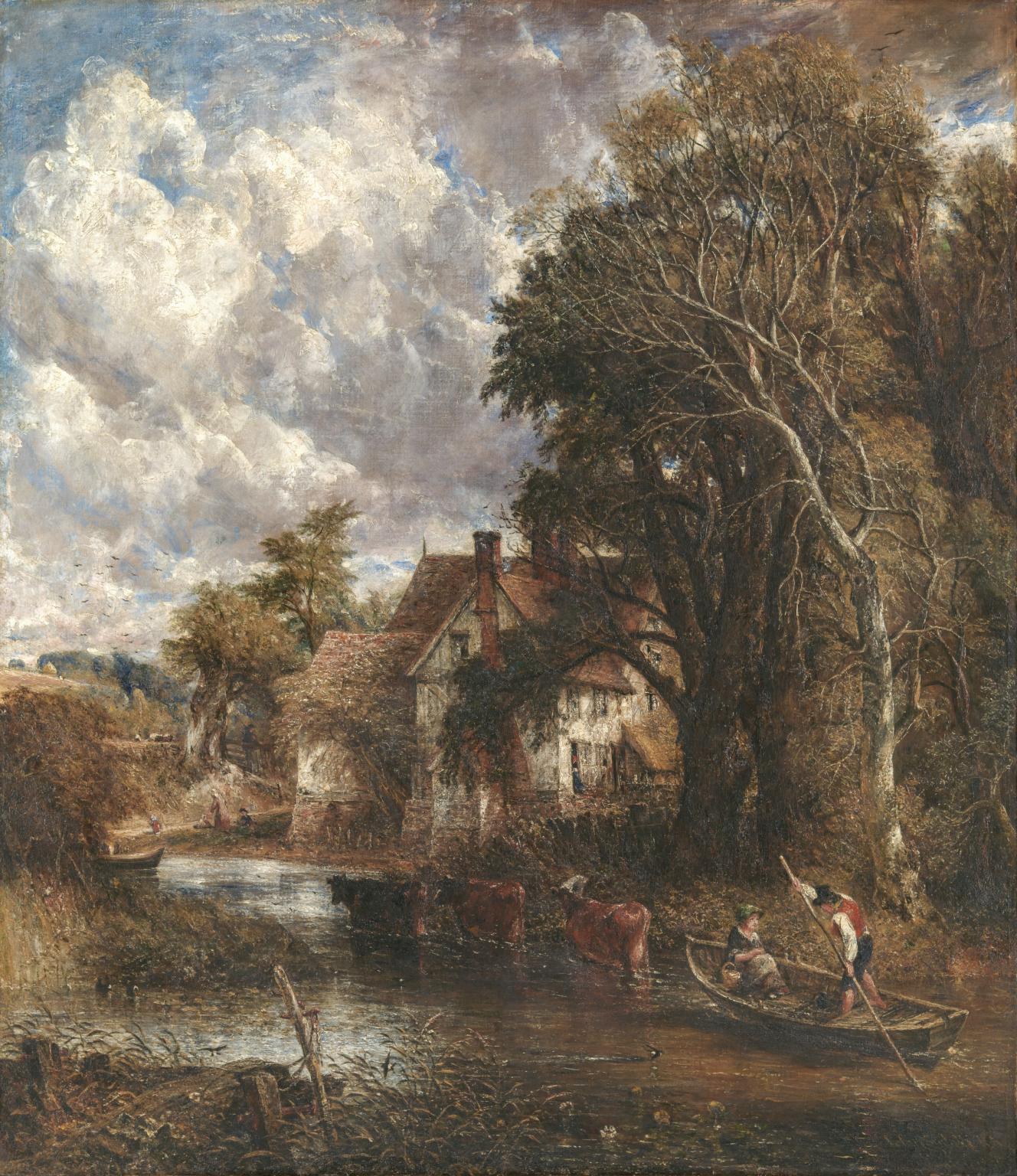
John Constable, The Valley Farm 1835
This work shows a view of Willy Lottãs House at Flatford from the River Stour. The farmer lived continuously in the same house for over eighty years and for Constable it came to represent an important part of the Suffolk landscape, a nostalgic symbol of the ãnaturalã way of life. In this painting Constable has made the house look grander by adding half-timbering on one side and some extra windows. The trees on the right of the picture are also larger, more expressive and more contorted than in earlier versions and there is a development towards looser and more expressive handling of paint.
Gallery label, May 2007
1/22
artworks in John Constable: Landscape and Legacy

John Constable, Harwich Lighthouse ?exhibited 1820
Constable painted at least three versions of this composition, one of which was exhibited at the Royal Academy in 1820. The lighthouse, known as the Low Lighthouse, was one of two at Harwich. Both were leased at the time by Constable's friend and patron, Major-General Slater-Rebow of Wivenhoe Park.
These small-scale coastal subjects in the Dutch manner were popular with collectors. A few years later Constable painted a composition of Yarmouth Jetty (displayed nearby) on the same format, and even used the same sky. He also made several versions of this composition.
Gallery label, August 2004
2/22
artworks in John Constable: Landscape and Legacy
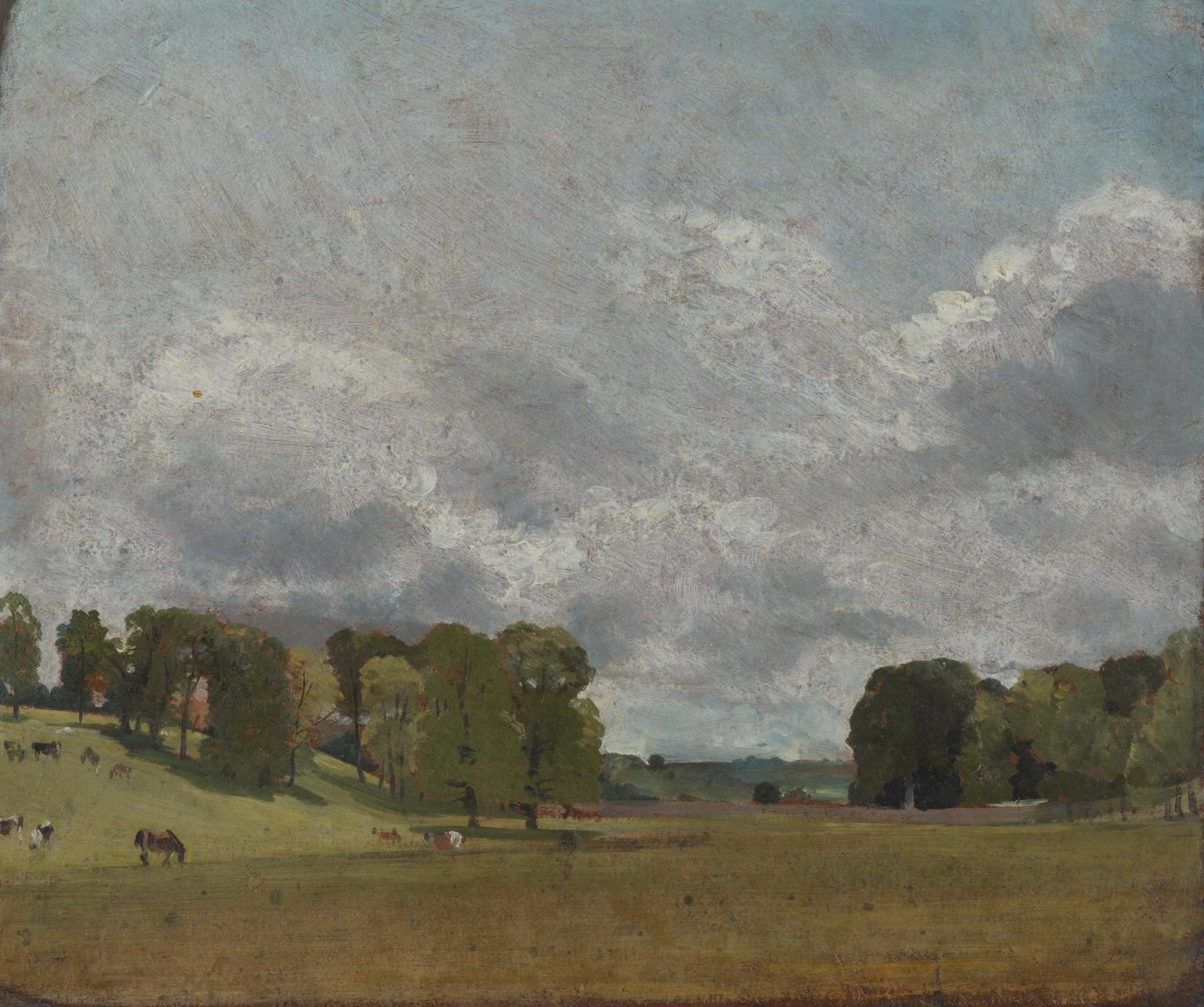
John Constable, View at Epsom 1809
Following his outdoor sketching campaign in Suffolk in 1802, Constable did not return to making oil studies from nature in earnest until around 1808. This sketch dates from the following year, and is notable for its smooth paintwork and strong tonal contrasts. The rectangular format of the study, together with its open vista and low horizon, allows him to devote a much larger area than usual to the representation of the sky. Constable paid several visits to Epsom between 1806 and 1812 to see his aunt and uncle, Mary and James Gubbins.
Gallery label, September 2004
3/22
artworks in John Constable: Landscape and Legacy
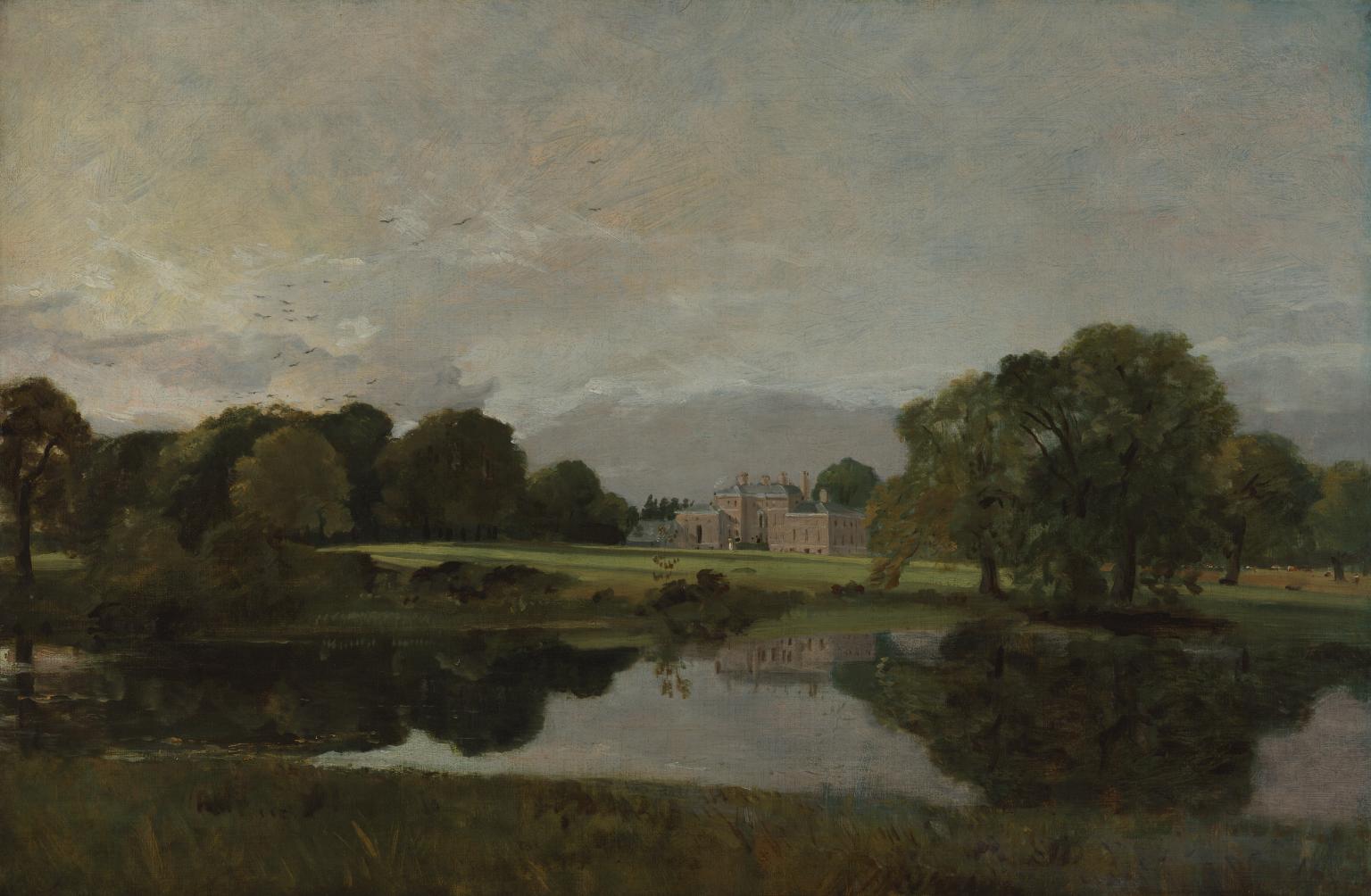
John Constable, Malvern Hall, Warwickshire 1809
This view of Malvern Hall in Warwickshire, seen from raised ground across a stretch of water, recalls a long tradition of country house portraiture which goes back to the seventeenth century. Yet it appears to have been painted for Constableãs own interest rather than being a formal, commissioned work. The sun is sinking below the trees to the left, which cast long shadows across the lawn at the back of the house. Above them hovers a flight of rooks. Many years later Constable wrote that the cawing of a rook was a ãvoice which instantaneously placed my youth before meã.
Gallery label, May 2007
4/22
artworks in John Constable: Landscape and Legacy
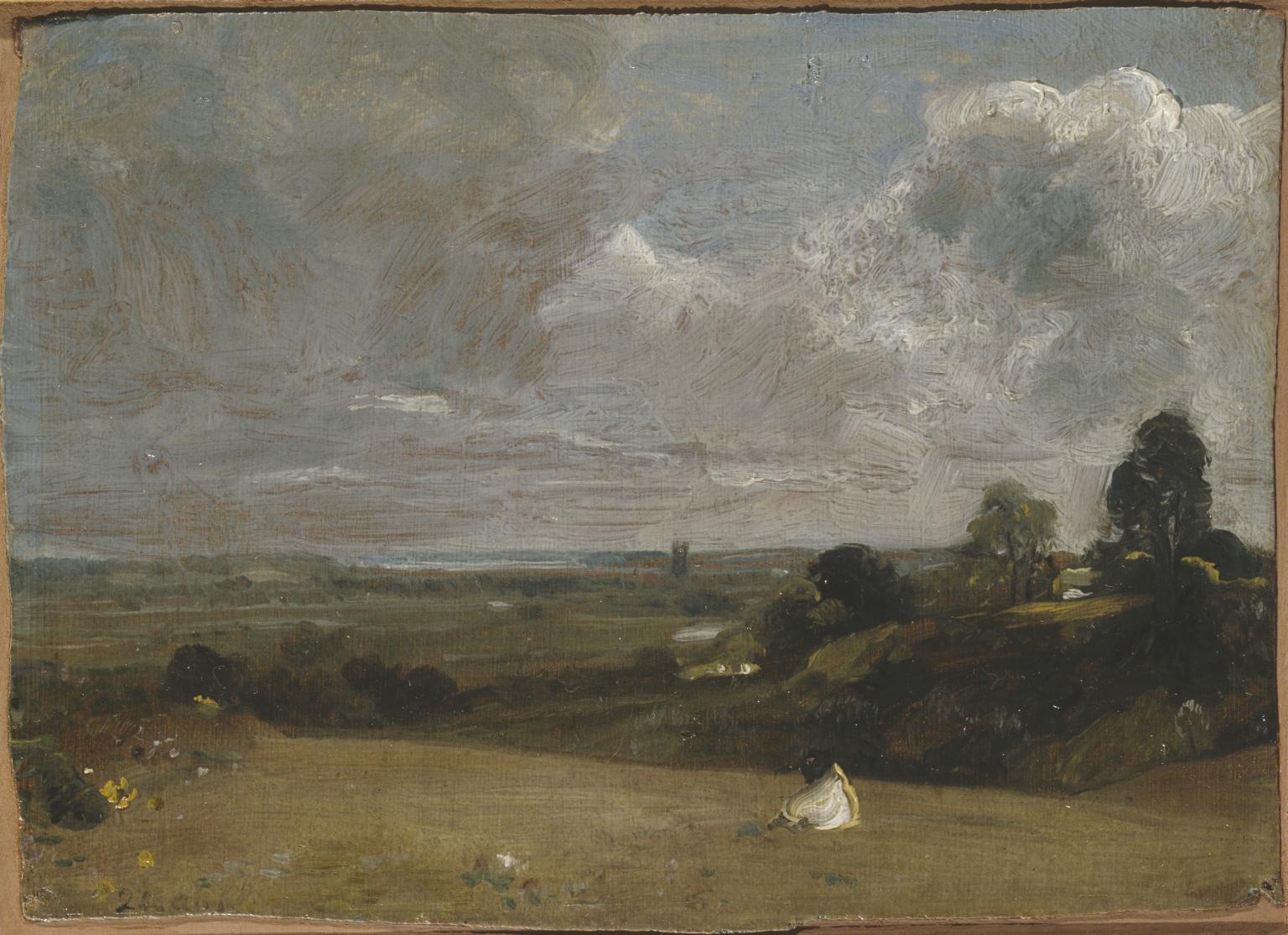
John Constable, Dedham from Langham ?1813
Constable included a version of this view in his series of prints known as English Landscape, published in the 1830s.
In a draft for the text to accompany the print, he described the subject as follows: ãThis view of the beautiful valley of the Stour ãÎ is taken from Langham an elevated spot to the NW of Dedham, where the elegance of the tower of Dedham church is seem to much advantage, being opposed to a branch of the sea at Harwich where this meandering river loses itself. This tower from all points forms a characteristic feature of the Vale.ã
Gallery label, September 2004
5/22
artworks in John Constable: Landscape and Legacy
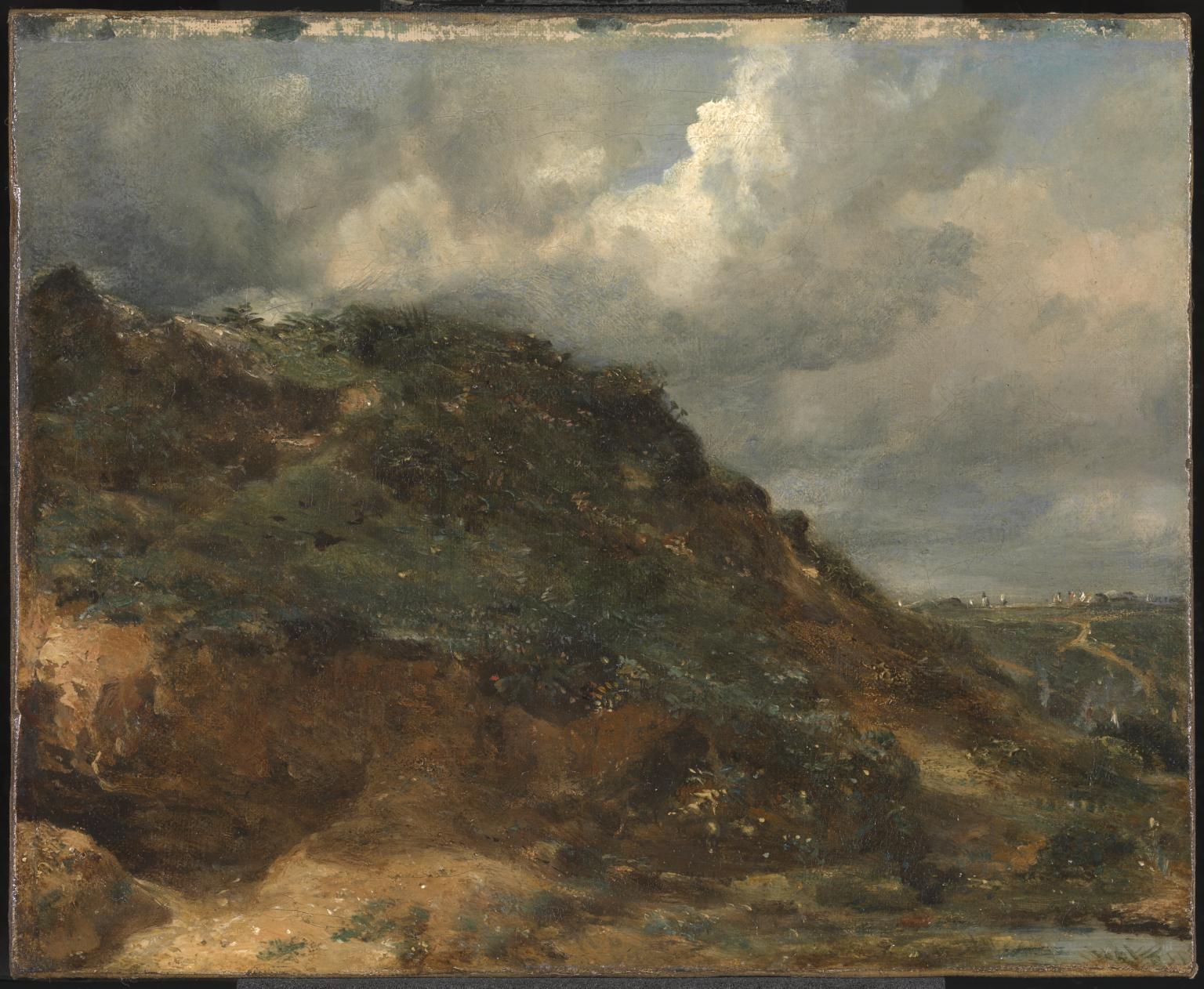
John Constable, A Bank on Hampstead Heath &ýåýºý¾ÝÒ;°Î.1820ã2
Between 1819 to 1826 Constable rented a house at Hampstead nearly every summer and made many oil sketches of the surrounding landscape and skies. In 1827 he moved there permanently. Constable was fascinated with the broken textures of the heath, and made a number of studies of it seen from close to. Some of these are quite highly finished, like this example. A glimpse of more distant landscape to the right acts as a counterbalance, while the tiny figures on the horizon help establish the scale.
Gallery label, May 2007
6/22
artworks in John Constable: Landscape and Legacy
John Constable, Branch Hill Pond, Hampstead Heath, with a Cart and Carters c.1825
This is an unfinished version of a picture that Constable first exhibited in 1825. It was acquired after Constable's death by his friend William Purton. An inscription on the back suggests that it was left unfinished deliberately: 'Constable told Purton that the sky so satisfied & pleased him, that he never would touch the canvass again for fear of spoiling it.'
Gallery label, August 2004
7/22
artworks in John Constable: Landscape and Legacy
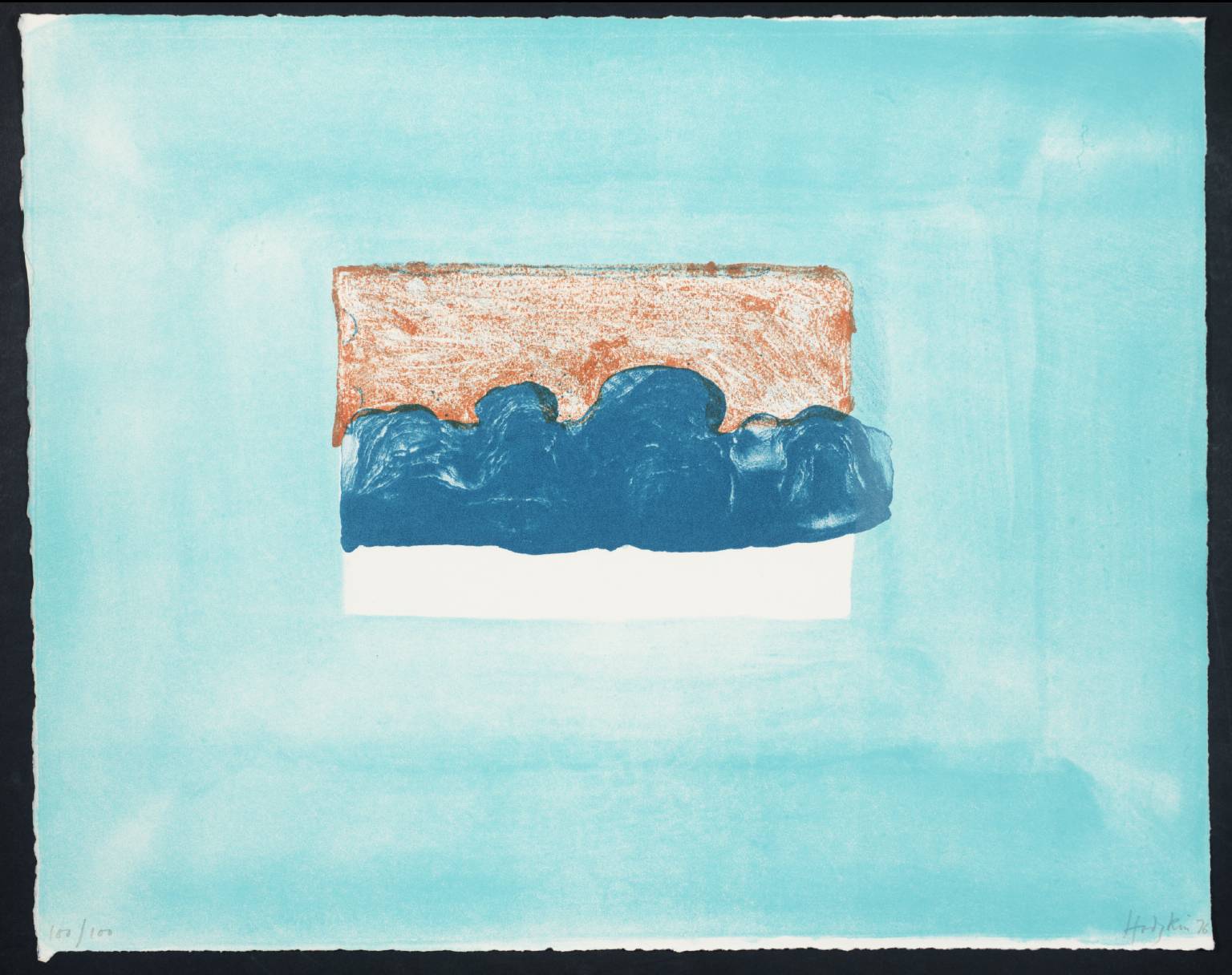
Howard Hodgkin, After Luke Howard 1976
8/22
artworks in John Constable: Landscape and Legacy
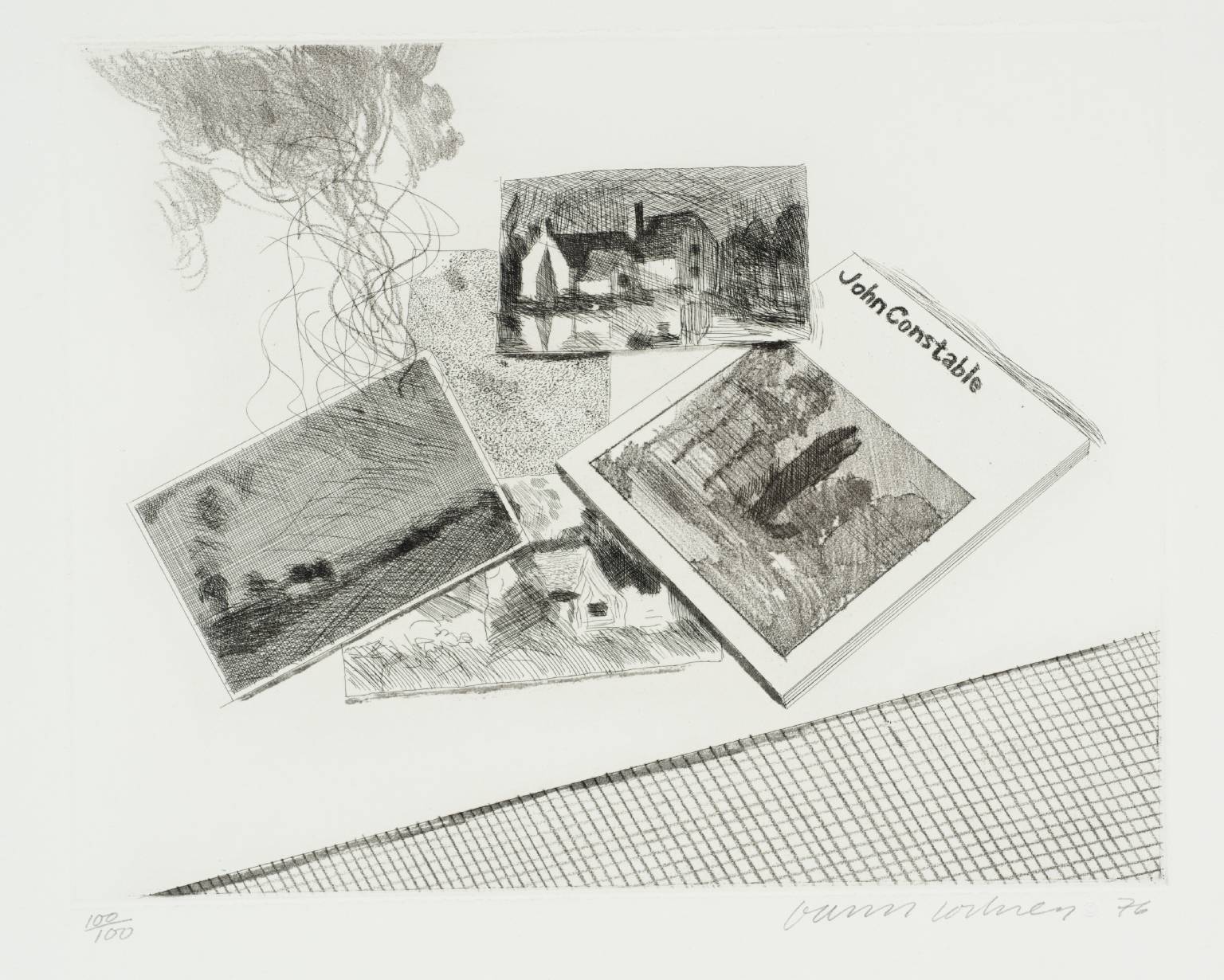
David Hockney, For John Constable 1976
9/22
artworks in John Constable: Landscape and Legacy
Leon Kossoff, From Constable: Stoke-by-Nayland 1991
This print
10/22
artworks in John Constable: Landscape and Legacy
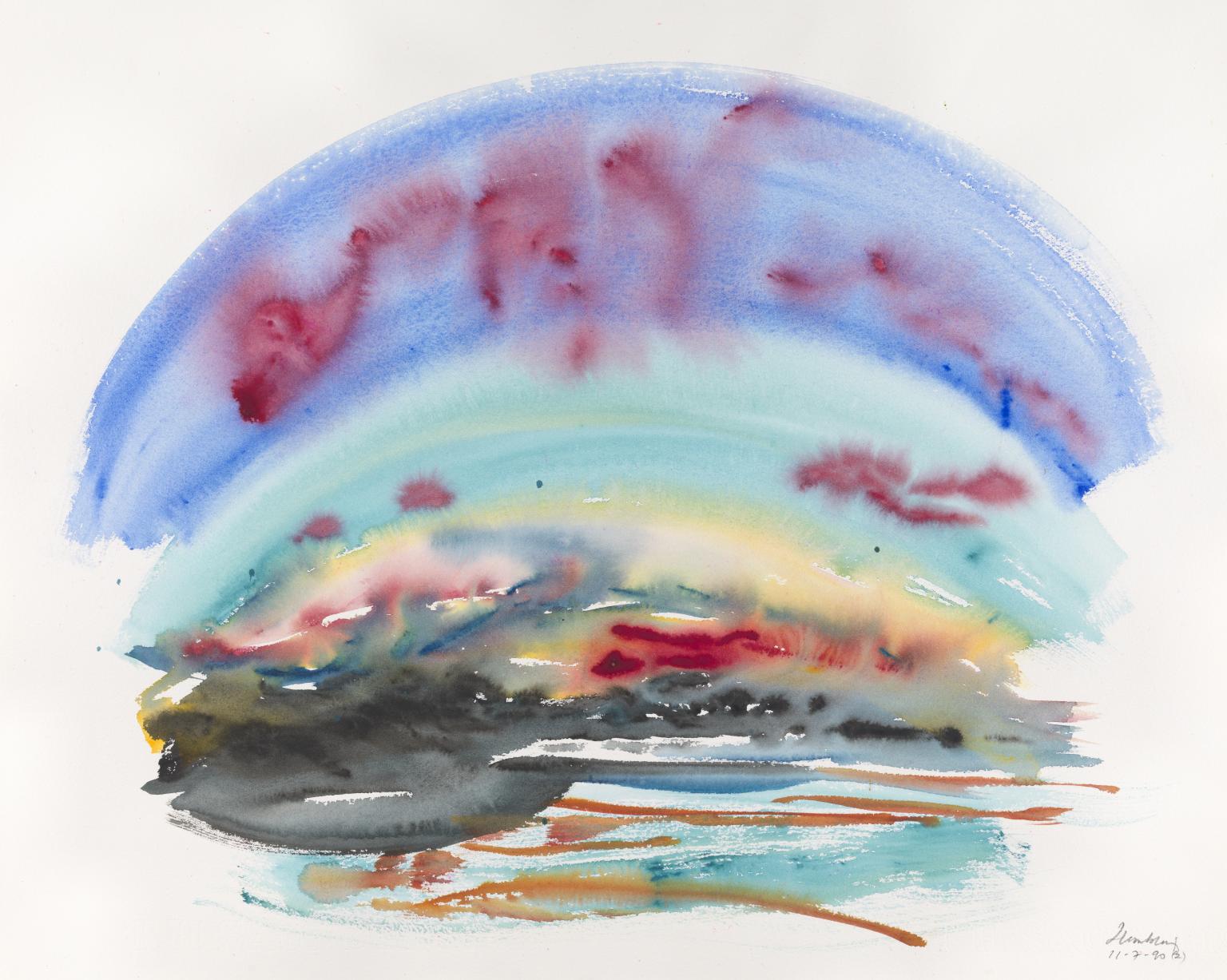
Maggi Hambling, Sunrise 11.7.90 1990
11/22
artworks in John Constable: Landscape and Legacy
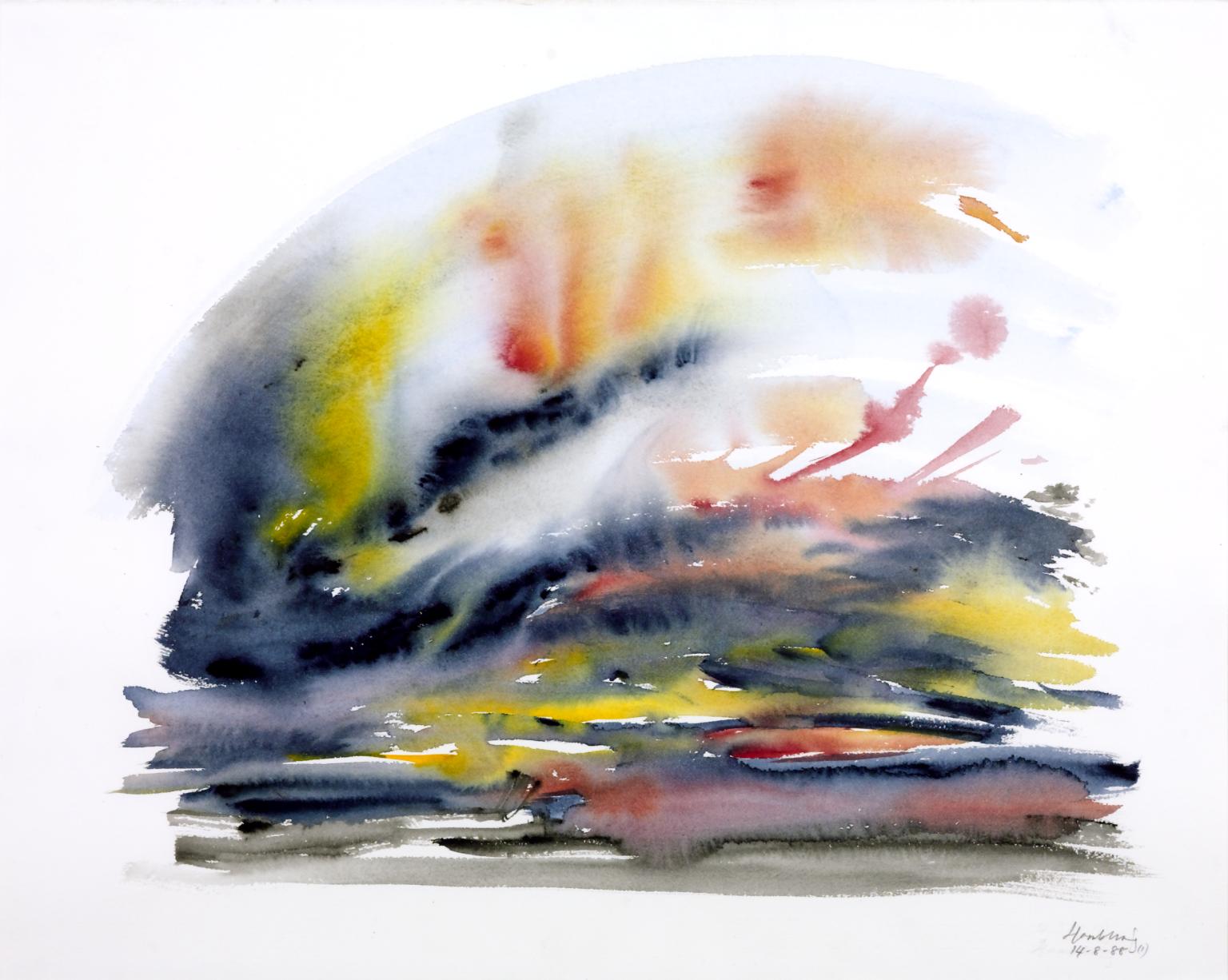
Maggi Hambling, Sunrise 14.8.88 1988
12/22
artworks in John Constable: Landscape and Legacy
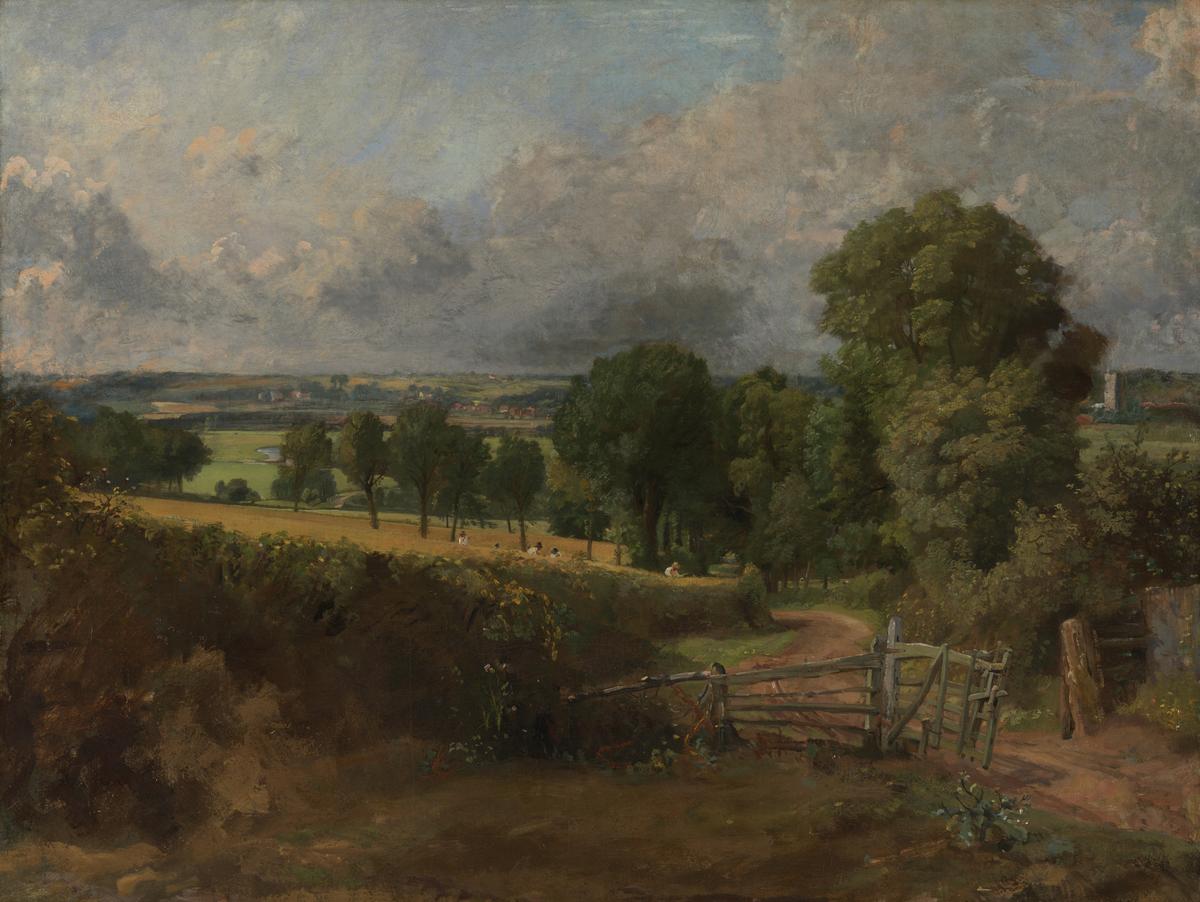
John Constable, Fen Lane, East Bergholt ?1817
Constable and his wife Maria took a long holiday in Suffolk in 1817. This was to be the last time he painted directly in oils in the vicinity of East Bergholt. Constable began several canvases outdoors without finishing them, perhaps in order to secure as much fresh material as possible in the time. Some parts of this canvas are painted to a fair degree of finish, whilst others are left in a more sketchy state.
Gallery label, August 2004
13/22
artworks in John Constable: Landscape and Legacy
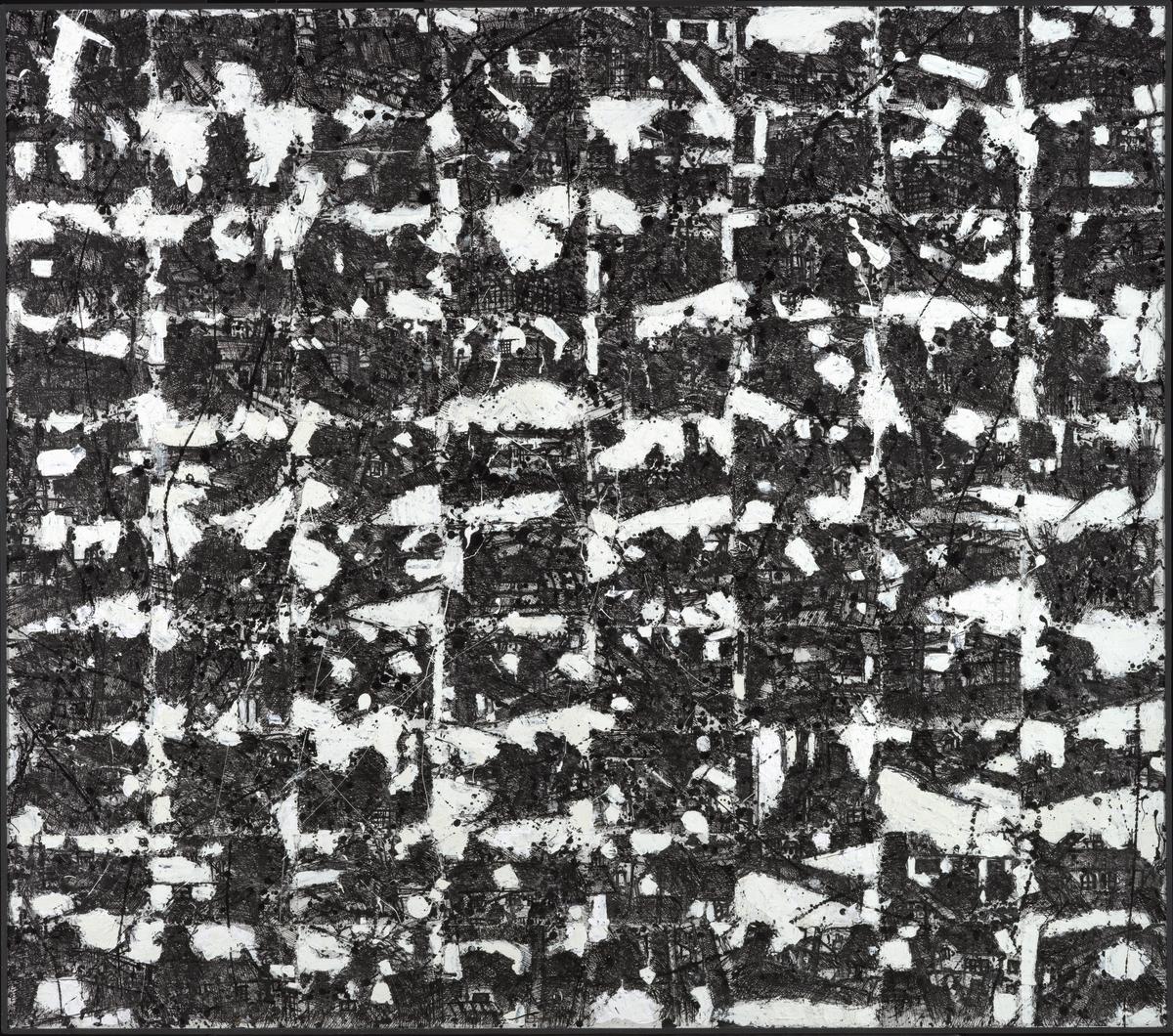
John Virtue, Landscape No. 109 &ýåýºý¾ÝÒ;1990ã91
Landscape No. 109 1990ã1 is a large mixed media work on paper by the British artist John Virtue. It is made up of eighty landscape-format black and white drawings in ink, graphite, charcoal, shellac, gouache and acrylic paint on paper, abutted in a grid ten high and eight across. Once mounted together on board, the surface of the drawings ã made predominantly in black ink ã has been enlivened by gestural marks of white acrylic. Individually, each of the drawings shows a distinct landscape view with a dominant motif ã a tree or treeline, house, church and roads; however, brought together in a grid, this individuality dissolves into a different unity that is closer to an abstraction. The addition of white acrylic marks variously tessellates and fragments the picture, as well as pulling together and unifying the individual drawings as one abstract image.
14/22
artworks in John Constable: Landscape and Legacy
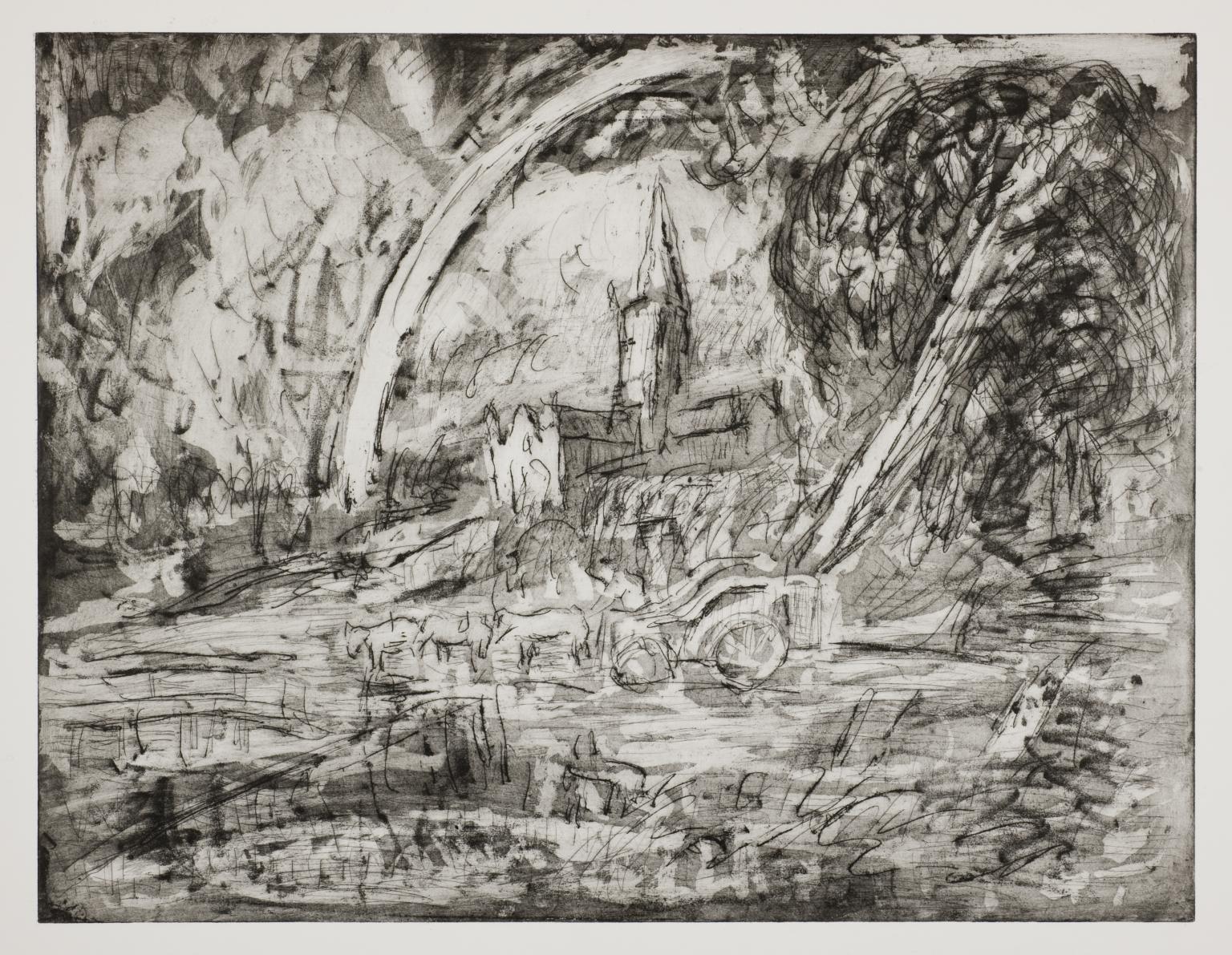
Leon Kossoff, Salisbury Cathedral from the Meadows (1) 1998
This print is one of many etchings executed by Leon Kossoff in response to, and literally in the presence of, oil paintings by other artists; in this case Salisbury Cathedral from the Meadows, 1831, by John Constable (1776-1837), owned by the National Gallery, London. Tate owns two prints by Kossoff after this Constable painting (Tate P11706-7). The artistãs ability to explore a number of separate responses while making drawings and prints from a single subject is illustrated in these etchings. This print was never published as an edition; Tate owns the only trial proof.
15/22
artworks in John Constable: Landscape and Legacy
John Constable, Harnham Ridge, Salisbury 1820 or 1829
Constable stayed at Salisbury with his great friend, Archdeacon John Fisher, on several occasions, but only in 1820 or 1829 for any length of time. This sketch could date from either visit. It is one of a number he made either from Leadenhall, Fisherãs house in the Close, or from its gardens stretching down to the river Avon. Many of them, like this one, concentrate on the sky.
In a letter to Fisher, in 1821, Constable famously described the sky as the ãkey noteã in a landscape painting, the ãstandard of Scaleã, and the chief ãOrgan of sentimentã.
Gallery label, September 2004
16/22
artworks in John Constable: Landscape and Legacy
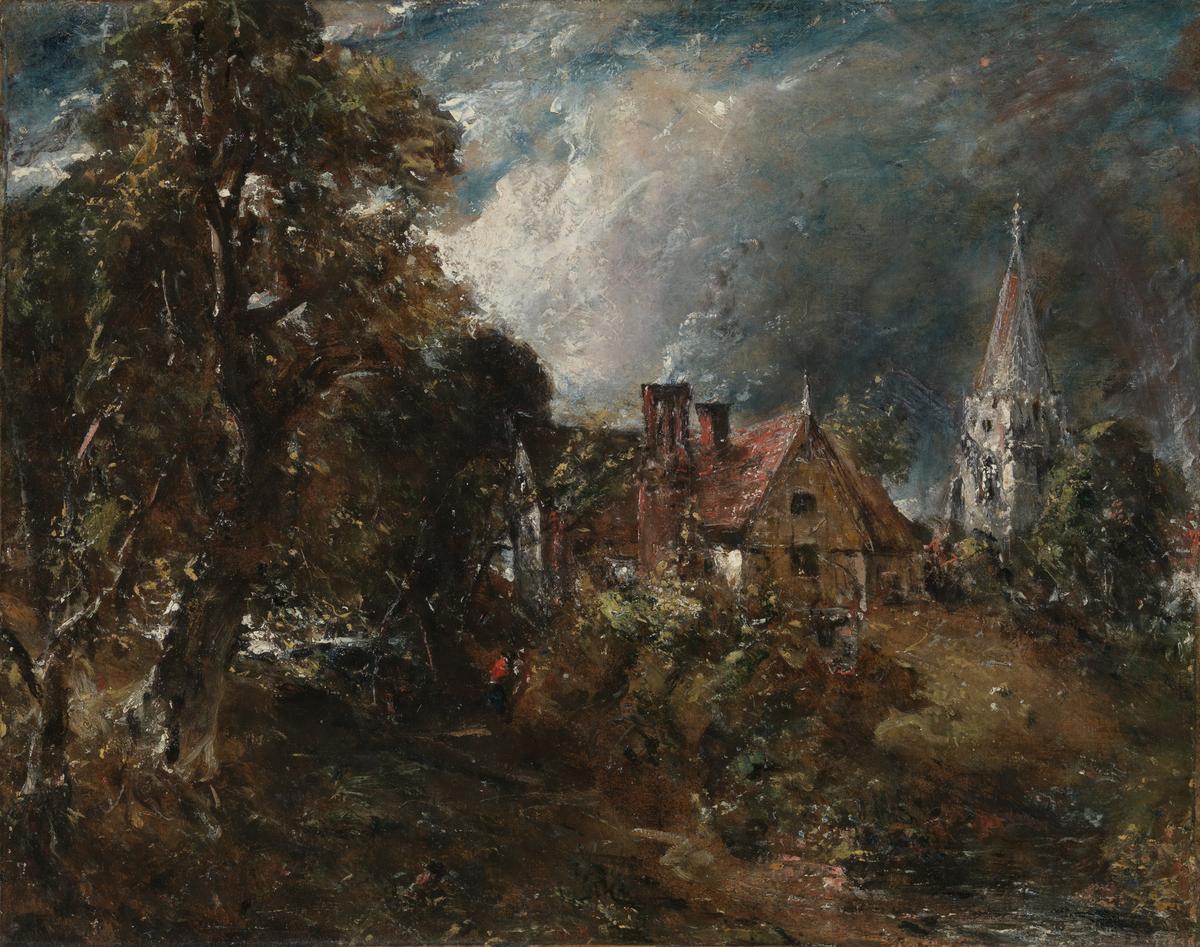
John Constable, The Glebe Farm c.1830
From around 1828, Constableãs paintings became darker. He conjured turbulent skies and applied paint using dabs and dashes. He grew obsessive about white highlights, believing they created ãfreshnessã. The critics, however, called this effect ãConstableãs ãsnowã. ãGlebeã means church-owned land. Constableãs supporter, the Bishop of Salisbury, had lived in this house during his time in Suffolk. Constable painted at least four other versions of this view after the Bishopãs death in 1825. He experimented on this one, adding a spire to the church and a rainbow on the right. He also tried changing the church into a windmill.
Gallery label, October 2023
17/22
artworks in John Constable: Landscape and Legacy
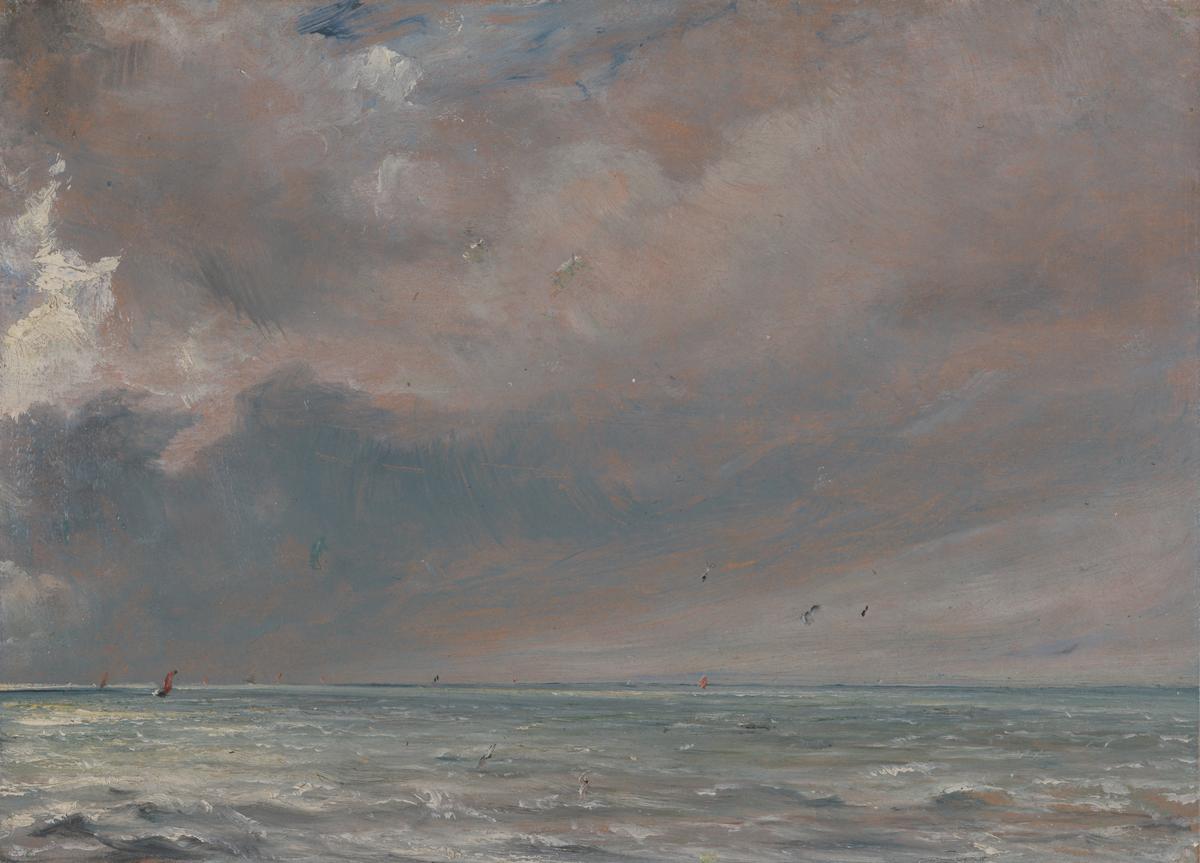
John Constable, The Sea near Brighton 1826
Brighton, on the south coast of England, was a place many Londoners escaped to. Some went there for fun, others for rest. Constable rented a house for his family there in the hope that the fresh sea air and change of scene would restore the health of his wife, Maria. This painting is one of only a handful of oil sketches Constable made outdoors in winter. He had written on being impressed by ãthe magnificence of the seaã and of how seabirds, like those seen here, ãadd to the wildness and to the sentiment of melancholyã at the shore.
Gallery label, October 2023
18/22
artworks in John Constable: Landscape and Legacy
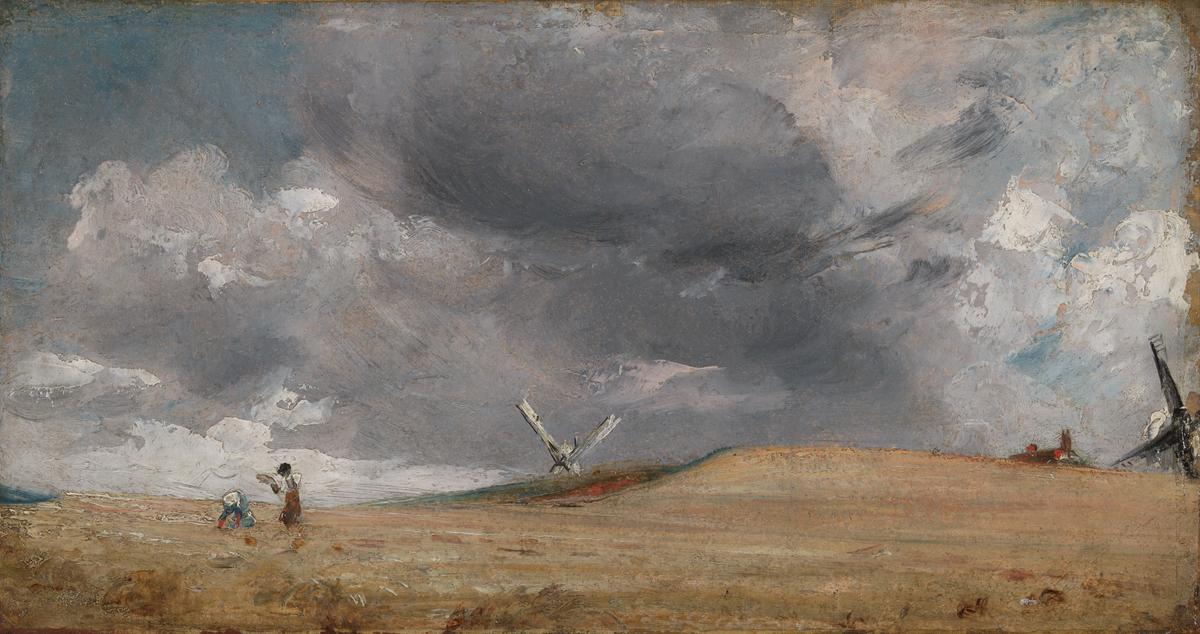
John Constable, The Gleaners, Brighton 1824
With his back turned to Brighton, Constable captures a blustery sky above the downs that surround the town. Two women, the gleaners, gather wheat ready for milling in the windmills nearby. It was typical of Constable to be so interested in the everyday work that happened on the edges of the fashionable resort. As he often did, Constable wrote the time of day the sketch records on the back: ãBrighton ã Noon, looking N.E. Augst 20, 1824ã. Later on, he extended the sketch to include the right-hand windmill and added clouds above the figures of the gleaners.
Gallery label, October 2023
19/22
artworks in John Constable: Landscape and Legacy
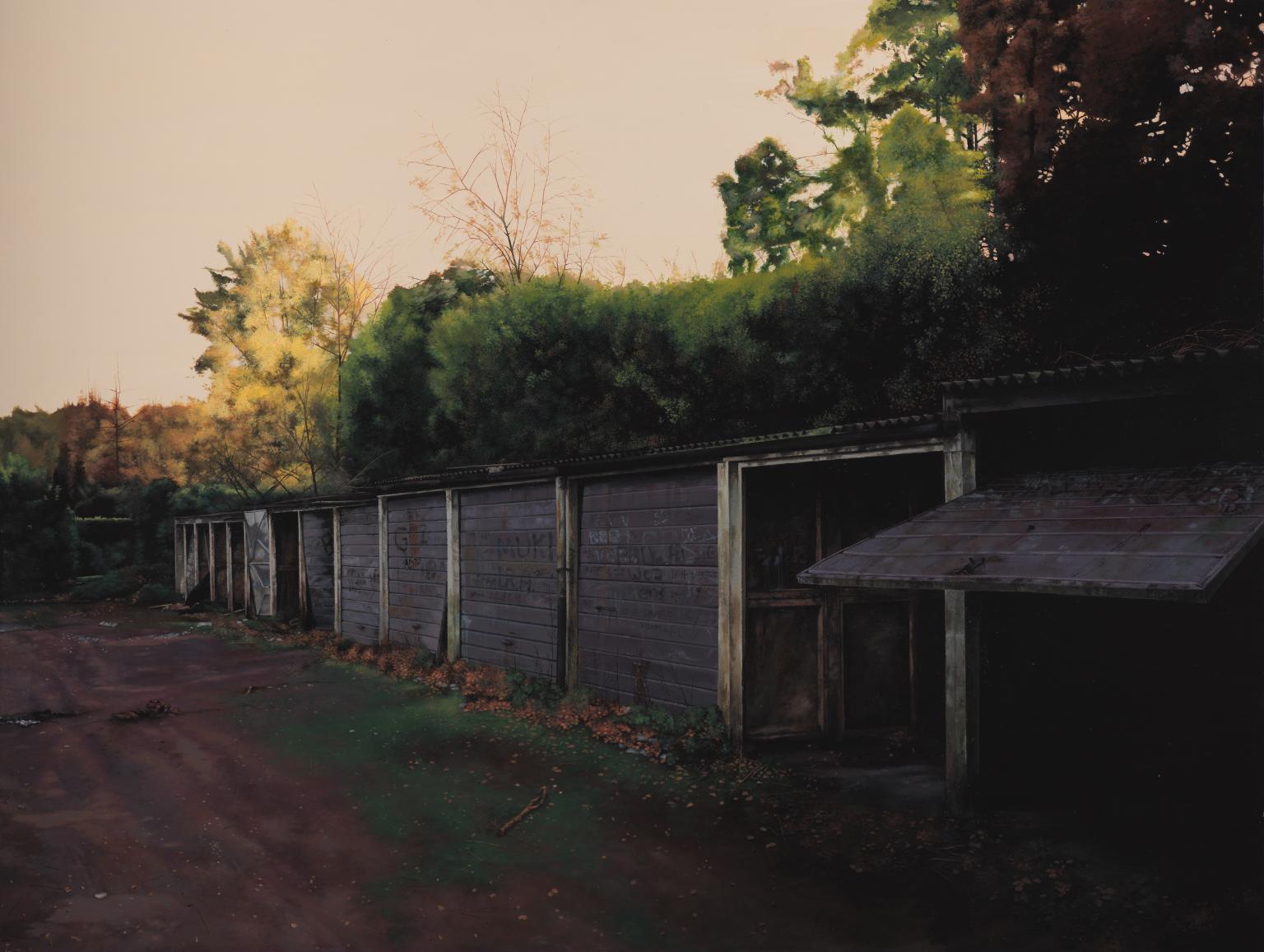
George Shaw, Scenes from the Passion: Late 2002
This painting depicts a derelict row of garage units in a semi-rural setting. Dense vegetation behind the units shuts out the sunlight pouring through the upper branches of trees standing above tall shrubs. A muddy track in front of the garage doors stretches across the foreground to a vanishing point at the left side of the painting. Patchy grass and weeds growing at the base of the doors suggests that they have not been used for a long time. Piles of copper leaves accumulated against the closed doors and sprinkled over the grass and muddy track indicate that it is late in the year as well as, possibly, late in the day. The vegetation is dense green at the level of the garage units, fading to lighter green where the sunlight penetrates it higher up. In places the leaves have turned to orange and yellow, deepening to a darker reddish brown. Leafless twigs sticking up above the garage roofs and shrubbery form a pale silhouette against the uniformly beige-coloured sky. The grey garage doors are scrawled with graffiti. Several are missing, leaving dark holes in the row of perspectivally diminishing units. In the foreground on the right, a door is raised at half mast, opening up a large black space inside the unit and casting thick shadows extending over the grass on the track. The door of the next unit is missing; a panelled wooden interior gleams dully out of the darkness from between the white-painted posts which separate the units. Like all Shawãs paintings, Scenes from the Passion: Late was made using Humbrol Airfix enamel paint in a range of seven colours. Manufactured for the use of hobbyists and model-makers, this paint has a glossy, reflective surface. It is suitable for rendering intricate detail and Shawãs use of it in the ãrealisticã depiction of nature recalls the work of such pre-Raphaelite painters as John Everett Millais (1829-96).
20/22
artworks in John Constable: Landscape and Legacy
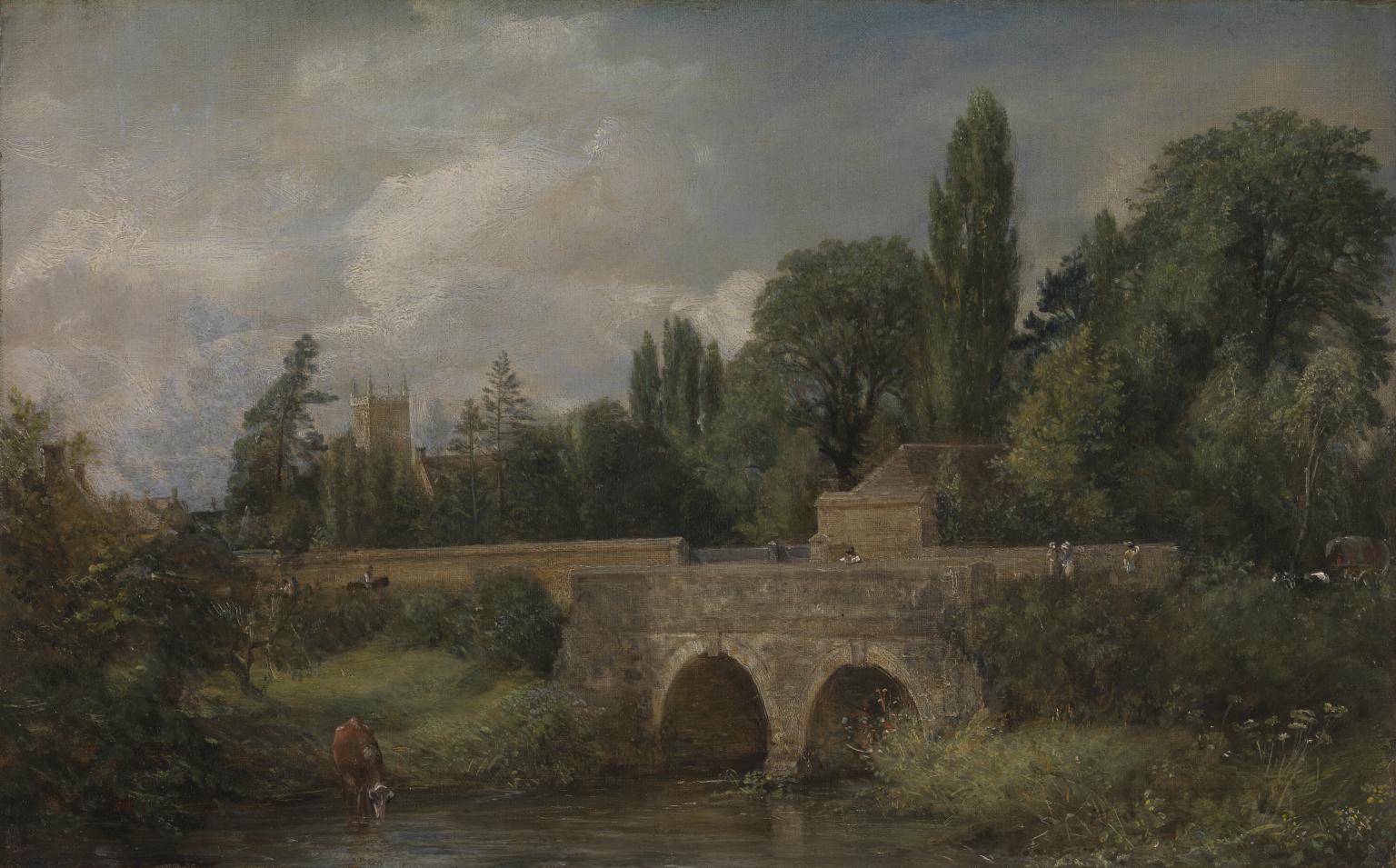
John Constable, Gillingham Bridge, Dorset 1823
In 1811 Dr John Fisher introduced his nephew, John Fisher, to Constable. The younger Fisher became the artistãs closest friend, providing moral and financial support whenever they were needed and often purchasing works from Constable which he could ill afford. In 1819 Fisher became Vicar of Gillingham in Dorset and Constable was invited to stay there in 1820 and again in 1823. On the second occasion he painted this picture of the bridge with the village church beyond. Fisherãs son Osmond later recalled seeing Constable ãsitting with his easel in the meadow at the right hand cornerã.
Gallery label, May 2007
21/22
artworks in John Constable: Landscape and Legacy
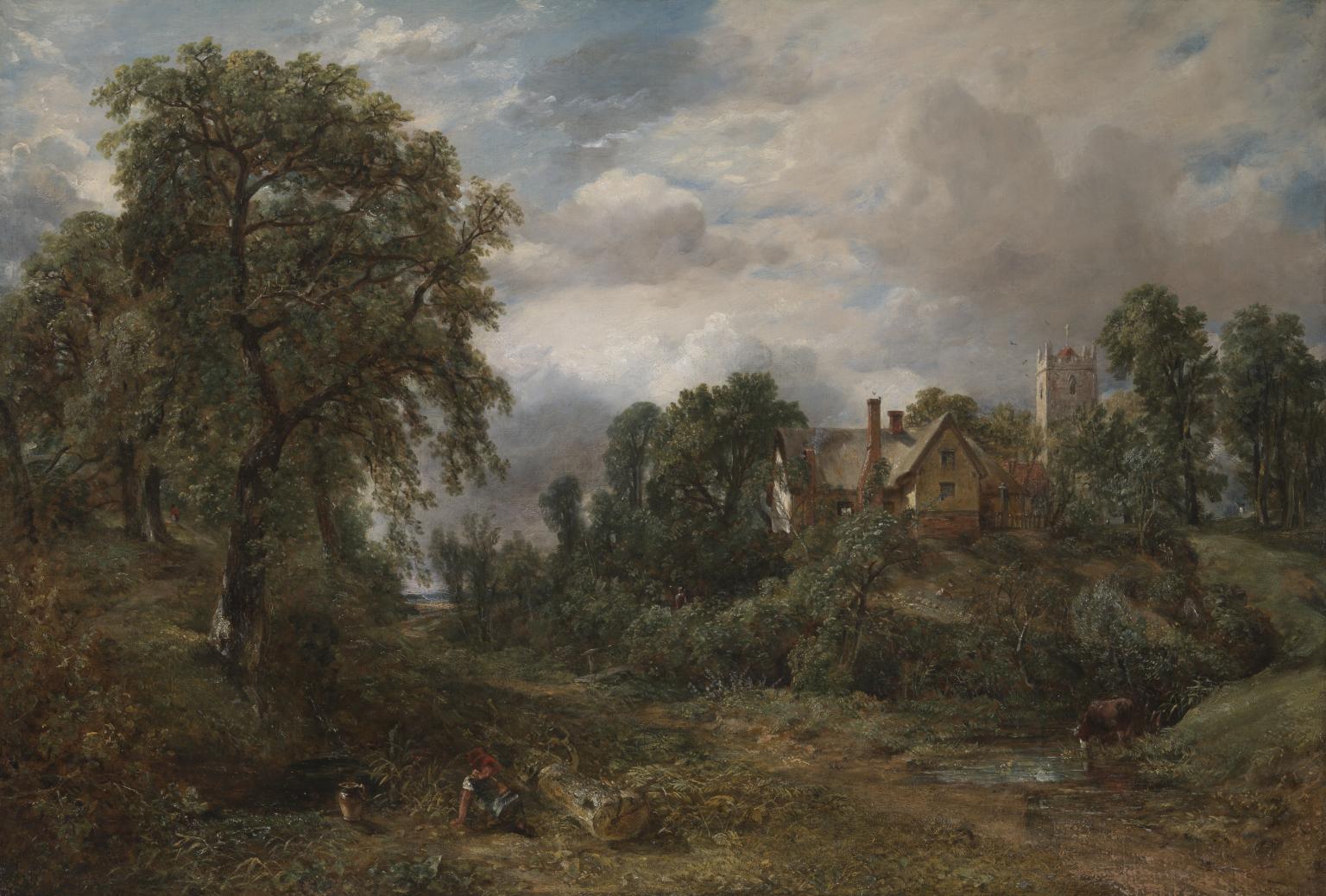
John Constable, The Glebe Farm c.1830
The cottage nestling in woodland is a common theme in nineteenth-century art. Painting this popular scene may suggest Constable was hoping to guarantee this work would sell.This painting also has an additional, personal significance. The image is based on an oil sketch of the home of Constableãs old friend and supporter Dr Fisher, Bishop of Salisbury. Fisherãs death in 1825 prompted Constable to return to the sketch and produce multiple oil paintings of the scene.
Gallery label, February 2019
22/22
artworks in John Constable: Landscape and Legacy
Art in this room






Sorry, no image available


Sorry, no image available





Sorry, no image available






You've viewed 6/22 artworks
You've viewed 22/22 artworks
